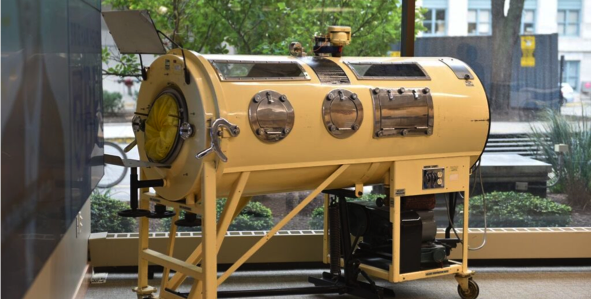Polio in America lingers since April

Jaws dropped across the nation with the findings of the New York Orange County health department, for they discovered traces of the Polio virus in New York sewers; the infection has lingered since April. This information intensifies the alarm surrounding the topic, considering in late July, the city confirmed the first case of Polio in the United States in a decade.
August 26, 2022
Within the United State’s borders, the debilitating disease Polio no longer grips communities at mass–or so previously thought. July 25 sparked intense terror within health departments nationwide with a 20-year-old man, unvaccinated, becoming ill. During that time, however, John Doe’s case consisted of contraction from a non-domestic source. Alarm for the disease resurfaced after test results from Orange County in New York revealed that the illness resided in sewers since April.
“[Polio] is really scary; we don’t hear about it anymore. We learned about it a couple of times in third grade and we moved on without life knowing that we kinda advanced past it. It wasn’t something that I’d ever expect to be on my radar,” senior Julia Skaggs said.
Polio entering the ring for the nation’s most populated city remains almost dire, considering the combination of COVID-19 and Monkeypox; both sicknesses the local and federal centers for disease control barely started to control. Moreover, with the historical nature of Polio and the prevention of at-risk persons (young children) from receiving vaccinations, the likelihood of a potential outbreak seems evident.
City officials push the concept of vaccination throughout their communities, arguing that becoming vaccinated protects oneself from the effects of the illness. However, the anti-vaccination sentiment continues to fester within the nation due to the marketing of alternative resources and the lack of benefits of the COVID-19 vaccine. The argument that vaccines do not operate as they should prevent an estimated 28% of Americans from protecting themselves and their loved ones. Nevertheless, the complications of the virus echo similar mindsets held during the beginning of the Polio epidemic within America.
The Polio virus felt a similar reverence for initial vaccination rates as did COVID-19. The horrifying and recent medical tragedy Tuskegee experiment still remained fresh in the minds of citizens in the 1940s; individuals’ trust in the medical field had dwindled to an all-time low, directly leading to the lack of vaccination rates. 1953 shifted the perspective with a monumental research prerogative: 2 million children. Through the successful testing of the efficiency of the Polio vaccine, the American public during the Golden Age managed to bring said rates up. Health departments can only hope from historical evidence of the illness and COVID-19 that the public will follow the same trends, however, there still remains skepticism of the nation’s ability to handle this.
“A lot of people live in New York and it’s a huge hub for things like that. A lot of people are on top of each other and I’m traveling to New York this weekend so the thought of having to fight off against COVID, Monkeypox and Polio is absolutely horrifying. While I’m vaccinated and wearing masks, I’m not very excited about any of this. It’s something I never thought I had to be afraid of,” Skaggs said.






